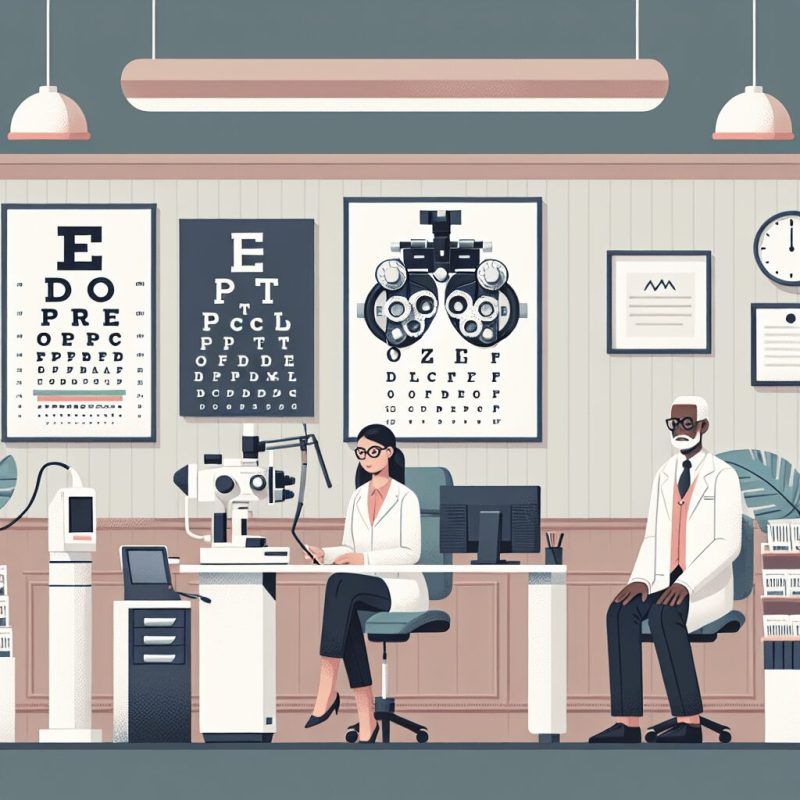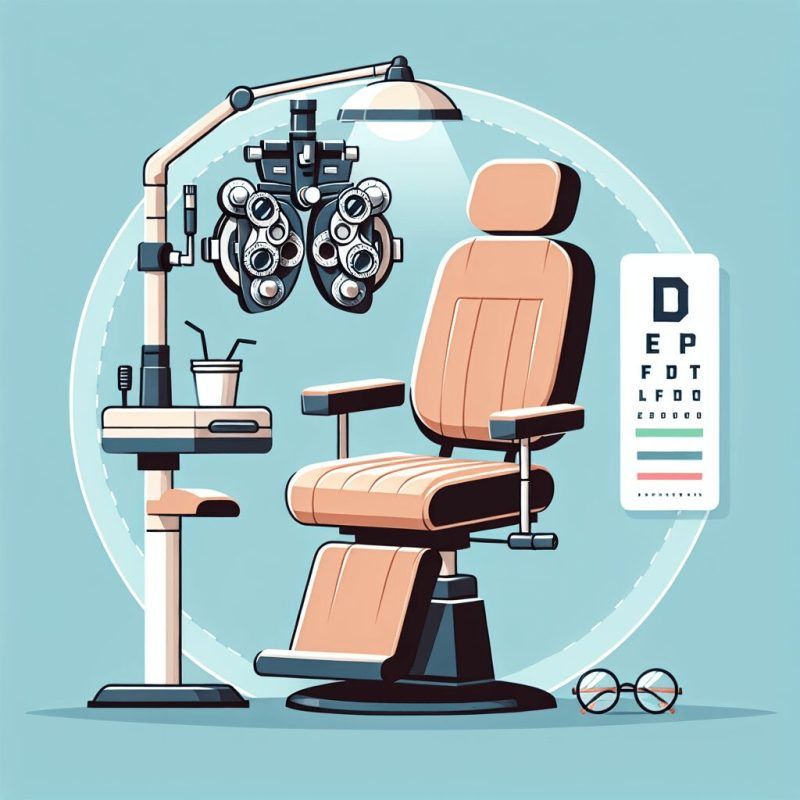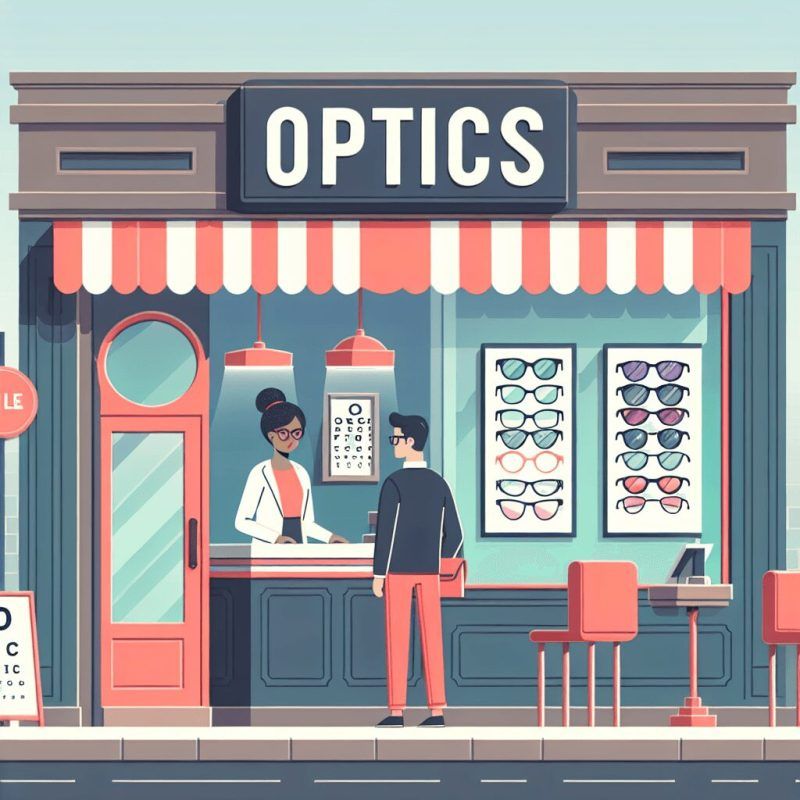1201 Lake Woodlands Dr #1000, Spring, TX | 281-298-5905
7540 Cypress Creek Pkwy, Houston, TX | 281-477-7811
Doctor's Corner
Finding the Best Glaucoma Treatment
Glaucoma is a condition that affects the eyes. It can lead to vision loss and potentially blindness by damaging the optic nerve. Treatment typically involves prescription eye drops. These help lower eye pressure and prevent damage to the optic nerve. The eye drops can’t cure glaucoma or reverse vision loss. However, they are essential in preventing the disease from getting worse. Knowing about the types of eye drops, possible side effects, and the importance of using them regularly can help manage glaucoma effectively.
Understanding Glaucoma and Its Treatment Options
What is Glaucoma and How Does It Affect the Eyes?
Glaucoma is a group of eye diseases that damage the optic nerve, leading to vision loss and blindness. It affects the eyes by increasing eye pressure due to fluid buildup.
Without treatment, glaucoma can progress and cause permanent vision loss. Symptoms include eye redness, blurred vision, and eye irritation.
Glaucoma differs from other eye conditions by the impact it has on the optic nerve, which can result in visual loss in the absence of symptoms.
The most common treatment for glaucoma is prescription eye drops, which work by lowering intraocular pressure. Other treatment options include oral medication, laser therapy, and surgery, such as trabeculectomy.
Medications like prostaglandin analogs, beta blockers, miotics, and carbonic anhydrase inhibitors are commonly used.
While medications can help manage glaucoma, continuous treatment and regular checkups are essential to prevent vision loss. Support groups and optometrists can provide additional health information and support for individuals managing glaucoma effectively.
Overview of Available Treatments for Glaucoma
Different types of medications are used to treat glaucoma. These include:
-
Prostaglandin analogs
-
Beta blockers
-
Miotics
-
Alpha-adrenergic agonists
-
Carbonic anhydrase inhibitors
These medications work by lowering intraocular pressure. This helps prevent damage to the optic nerve. Potential side effects may include:
-
Eye irritation
-
Eye redness
-
Changes in heart rate and blood pressure
In addition to medication, there are other treatment options available. These include laser therapies like:
-
Trabeculoplasty
-
Laser peripheral iridotomy
-
Cyclophotocoagulation
There are also advanced surgical interventions such as:
-
Trabeculectomy
-
Drainage implant devices
-
Canaloplasty
Seeking regular checkups and exploring additional therapies is important. Consulting with optometrists for personalized treatment options tailored to individual conditions and overall health is also recommended.
Medications for Glaucoma Treatment
The Role of Eye Drops in Managing Glaucoma
Eye drops are important in managing glaucoma. They help lower intraocular pressure, prevent damage to the optic nerve, and reduce the risk of vision loss.
Different types of eye drops are used to treat glaucoma, including prostaglandin analogs, beta blockers, miotics, alpha-adrenergic agonists, and carbonic anhydrase inhibitors. These medications work by improving fluid outflow or reducing aqueous humor production.
The benefits of using eye drops for glaucoma treatment are maintaining optimal eye pressure, preventing further optic nerve damage, and potentially recovering vision.
It’s important to know about possible side effects like eye irritation, redness, and blurred vision when using these eye drops. Regular eye doctor checkups and exploring other treatments like laser therapy or surgery may be needed for effective glaucoma management and preserving vision health.
Types of Drugs Used to Treat Glaucoma
There are different types of drugs for glaucoma treatment:
-
Prostaglandin analogs
-
Beta blockers
-
Alpha-adrenergic agonists
-
Carbonic anhydrase inhibitors
-
Miotics
-
Rho kinase inhibitors
These drugs help lower intraocular pressure in various ways, like improving fluid outflow or reducing production. For instance, prostaglandin analogs enhance fluid outflow, while beta blockers reduce fluid production, and miotics improve fluid drainage.
Side effects range from eye redness to discomfort and are determined based on the patient’s health. Sometimes, eye drops may not suffice, leading to additional treatments like laser therapy, oral medications, or surgery. These help prevent vision loss and aid in visual recovery.
Other options like Rocklatan or Trabectome procedure offer alternative methods for lowering eye pressure and supporting optic nerve health. Regular eye check-ups are crucial to monitor glaucoma progression and adjust treatment plans accordingly.
Laser Therapies for Glaucoma
Understanding Laser Surgery for Glaucoma
Laser surgery is a common treatment option for glaucoma. It focuses on using a laser to improve fluid drainage in the eye, lowering eye pressure.
This method targets the underlying cause of vision loss, which is elevated eye pressure due to fluid buildup. By enhancing fluid outflow, laser surgery can prevent further damage to the optic nerve and potential permanent vision loss.
Additionally, laser surgery for glaucoma is less invasive compared to traditional surgeries like trabeculectomy.
It effectively lowers intraocular pressure by creating new drainage channels or improving existing ones. This helps maintain optimal eye pressure, preventing glaucoma progression and preserving vision.
Laser surgery directly addresses the root cause of high eye pressure, offering a long-term solution and reducing the need for daily eye drops or oral medications.
While there are some risks like temporary eye irritation and pain, the benefits of lowering intraocular pressure and preserving vision outweigh these minimal risks.
Different Types of Laser Therapies Available
Glaucoma is often treated with prescription eye drops. These drops lower eye pressure to protect the optic nerve. They don’t cure glaucoma but help avoid vision loss. Not using them correctly can lead to permanent vision loss.
Laser surgeries, like trabeculoplasty and laser peripheral iridotomy, are effective in reducing eye pressure, especially if eye drops aren’t suitable. Trabeculectomy surgery may be an option if other treatments fail, and drainage tubes can create new drainage channels.
Combining glaucoma and cataract surgery can help patients with both conditions. Regular checkups are vital for monitoring eye health and preventing permanent vision loss from glaucoma.
Surgical Procedures for Severe Cases
Trabeculoplasty: A Surgical Option for Glaucoma
Trabeculoplasty is a surgical option for glaucoma. It aims to lower intraocular pressure using a laser to improve fluid drainage in the eye.
The procedure targets the trabecular meshwork, responsible for draining aqueous humor. By enhancing fluid outflow, it reduces pressure inside the eye.
Trabeculoplasty is an alternative when medication or eye drops are not managing eye pressure effectively in glaucoma.
Benefits include lowering intraocular pressure, preventing optic nerve damage, and reducing the risk of vision loss.
However, there are risks like eye discomfort, redness, and temporary blurred vision after surgery.
Patients should discuss benefits and risks with their eye doctor to decide on the best glaucoma treatment.
Peripheral Iridotomy and Its Benefits in Glaucoma Treatment
Peripheral iridotomy is a surgical procedure used in the treatment of glaucoma to help lower intraocular pressure. This procedure involves creating a small hole in the iris using a laser, allowing fluid to flow through the iris, which helps open the drainage angle of the eye and relieves eye pressure. Peripheral iridotomy is beneficial in managing glaucoma as it aids in improving fluid outflow from the eye, thus reducing eye pressure more effectively compared to some medications.
By promoting better drainage of aqueous humor, peripheral iridotomy can help prevent further optic nerve damage, which is crucial in preventing permanent vision loss in glaucoma patients. This procedure provides a valuable additional therapy option for individuals with glaucoma, offering a way to address blocked drainage angles and support visual recovery.
Peripheral iridotomy, alongside regular checkups and other treatment modalities like eye drops or oral medication, plays a significant role in maintaining eye health and managing glaucoma effectively by addressing the underlying issue of elevated eye pressure.
Cyclophotocoagulation and Its Role in Managing Glaucoma
Cyclophotocoagulation is a surgery that helps manage glaucoma by reducing eye pressure.
It targets the ciliary body, which produces fluid in the eye.
The procedure uses laser treatment to decrease fluid production, thus lowering eye pressure.
Compared to other surgeries for glaucoma, Cyclophotocoagulation directly tackles the source of high eye pressure.
By targeting the ciliary body, it aims to disrupt fluid production and improve fluid outflow, helping manage glaucoma.
This surgery might be suitable for people who haven’t responded well to traditional treatments like medication or laser therapy.
It offers an alternative to control eye pressure and prevent further vision loss.
Panretinal Photocoagulation for Advanced Glaucoma Cases
In advanced glaucoma cases, Panretinal Photocoagulation is important for managing the condition.
This procedure uses a laser to treat areas of the retina outside the macula. It aims to improve blood circulation and reduce eye pressure.
Panretinal Photocoagulation targets a larger area of the retina compared to other laser therapies for glaucoma. This makes it effective in severe cases with extensive damage or blockage in fluid drainage from the eye.
Potential benefits of this procedure include lowering intraocular pressure, preserving vision, and possibly preventing further vision loss.
However, there are risks involved such as eye irritation, discomfort, and temporary blurred vision.
Patients should be closely monitored by their eye doctor during treatment to ensure the best outcomes and promptly address any side effects.
Advanced Surgical Interventions for Glaucoma
Advanced surgical interventions for glaucoma offer more options than traditional treatments like eye drops or pills.
Procedures include trabeculectomy, canaloplasty, drainage implant devices, combined glaucoma and cataract surgery, and minimally invasive glaucoma surgeries (MIGS).
These innovative methods help manage the disease by lowering eye pressure and improving fluid outflow.
Consider side effects, impact on eye pressure, and visual recovery before choosing these treatments.
Work closely with ophthalmologists, have regular checkups, and explore additional therapies.
Establish a support network through eye care centers and support groups for health information and emotional support during treatment.
Innovative Devices and Treatments for Glaucoma
Innovative devices and treatments are changing how glaucoma is managed. These include:
-
Trabectome surgery
-
Biodegradable eye implant Durysta
 with bimatoprost
with bimatoprost -
Laser therapies like trabeculoplasty, laser peripheral iridotomy, and cyclophotocoagulation
-
Conventional surgeries such as trabeculectomy
These advancements help lower eye pressure and prevent optic nerve damage.
Combined surgeries for glaucoma and cataracts are improving treatment for individuals with both conditions.
Drainage implant devices like tubes and shunts are offering new ways to manage blocked drainage and control eye pressure effectively.
These treatments focus not only on reducing pressure but also on preventing vision loss and promoting overall eye health.
Special Considerations in Glaucoma Treatment
Glaucoma treatment involves regular use of prescription eye drops, oral medicine, laser treatment, or surgery to lower eye pressure. Medications like prostaglandin analogs, beta blockers, miotics, alpha-adrenergic agonists, and carbonic anhydrase inhibitors are commonly used to reduce intraocular pressure and prevent vision loss.
These treatments improve the outflow of aqueous humor but may cause side effects such as eye irritation, blurred vision, and redness. In severe cases, procedures like trabeculectomy or MIGS can help manage blocked outflow channels.
Factors like glaucoma severity, other conditions, and individual response to medication guide treatment choices. Regular eye checkups, support groups, and therapies are important for monitoring progress and promoting visual recovery.
FAQ
What are the different types of glaucoma treatment available?
The different types of glaucoma treatments available include eye drops, oral medications, laser therapy, microsurgery, and drainage implants.
How do I know which glaucoma treatment is best for me?
Consult with an optometrist to determine the best treatment option for your specific type and stage of glaucoma. Treatment options may include eye drops, oral medications, laser therapy, or surgery.
What are the potential side effects of glaucoma treatment?
Potential side effects of glaucoma treatment may include blurry vision, eye irritation, redness, headaches, and stinging or burning sensation in the eyes. Contact your healthcare provider if you experience any of these side effects.
Can glaucoma treatment prevent further vision loss?
Yes, glaucoma treatment can prevent further vision loss by lowering intraocular pressure. Treatments may include eye drops, oral medications, laser therapy, or surgery. Regular monitoring and compliance with treatment are crucial for managing glaucoma and preserving vision.
How often should I have check-ups when receiving glaucoma treatment?
The frequency of check-ups for glaucoma treatment can vary, but typically patients should have eye exams every 3 to 6 months to monitor eye pressure, vision changes, and overall eye health. Your eye doctor will recommend a specific schedule based on your individual needs.
Book your appointment today to prioritize your eye health, receive top-notch eye care at Superior Eye Care in The Woodlands or Quality Eye Care in Willowbrook, Texas, and gain valuable insight on managing glaucoma.
The post Finding the Best Glaucoma Treatment first appeared on Optometrist in Woodlands & Willowbrook TX.
Doctor's Corner
Our Featured Post
Do you have questions about our service?
Useful Links
Information
Mailing List
Stay updated on the latest news & promotions.
We will get back to you as soon as possible.
Please try again later.
All Rights Reserved | Superior Eye Care





